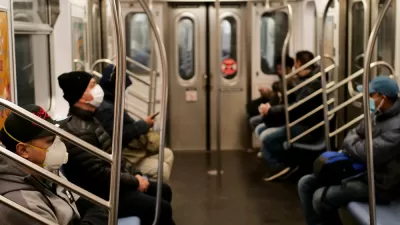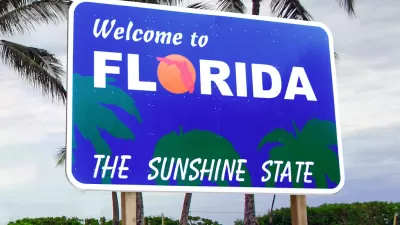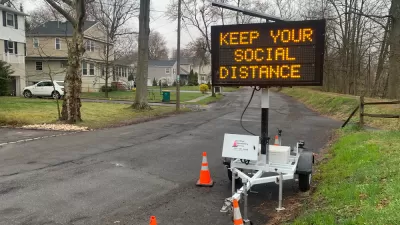The terminology of the coronavirus pandemic isn't applied consistently, particularly when dealing with areas seeing a resurgence of infection after states have relaxed social distancing restrictions. The World Health Organization added some clarity.

"Dallas, Houston, Southeast Florida’s Gold Coast, the entire state of Alabama and several other places in the South that have been rapidly reopening their economies are in danger of a second wave of coronavirus infections over the next four weeks, according to a research team that uses cellphone data to track social mobility and forecast the trajectory of the pandemic," reported Joel Achenbach, Rachel Weiner, Karin Brulliard and Isaac Stanley-Becker for The Washington Post on May 20. [Italics added]
The term, second wave, made famous in its application to the 1918 influenza pandemic as it was the most deadly of the three waves, is technically not what we're seeing in the "24 states still have uncontrolled coronavirus spread" in the United States. Gov. Asa Hutchinson of Arkansas on got it right on May 23 when he called the increase in COVID cases in his state a "second peak."
"The world is still in the middle of the first wave of the coronavirus outbreak," World Health Organization emergencies head Dr Mike Ryan told an online briefing on May 25, reported Emma Farge for Reuters (source article). "Countries where coronavirus infections are declining could still face an 'immediate second peak' if they let up too soon on measures to halt the outbreak," according to the organization.
Ryan said epidemics often come in waves, which means that outbreaks could come back later this year in places where the first wave has subsided. There was also a chance that infection rates could rise again more quickly if measures to halt the first wave were lifted too soon.
“When we speak about a second wave classically what we often mean is there will be a first wave of the disease by itself, and then it recurs months later. And that may be a reality for many countries in a number of months’ time,” Ryan said.
Anthony Fauci, one of two public health experts on the White House Coronavirus Task Force, and Robert Redfield, head of the Centers for Disease Control and Prevention, have assured Americans that a second wave is inevitable. It would likely come in the winter and would coincide with the flu season.
New model forecasts second peaks
Back to the aforementioned research described by The Washington Post that is based on a model developed by PolicyLab at Children’s Hospital of Philadelphia that shows projected COVID-19 cases across nearly 400 U.S. counties for the next four weeks based on current social distancing practices.
"The model...updated Wednesday with new data, suggests that most communities in the United States should be able to avoid a second spike in the near term if residents are careful to maintain social distancing even as businesses open up and restrictions are eased," write Achenbach, Weiner, Brulliard and Stanley-Becker. [Italics added].
As for the "second wave," Policy Lab used the inappropriate term, albeit in a different context, in their press release on May 20.
Overall, the findings indicate the risk for large second waves of outbreaks remains low if communities continue to implement cautious, incremental plans to reopening that limit crowding and travel to non-essential businesses.
In a related article in the Post, Reis Thebault Abigail Hauslohner report that "[t]he pandemic that first struck in major metropolises is now increasingly finding its front line in the country’s rural areas; counties with acres of farmland, cramped meatpacking plants, out-of-the-way prisons and few hospital beds."
Related in Planetizen:
- Coronavirus Shuts Down Food Processing Plant as President Pushes Reopening Economy, April 19, 2020
- Will the Coronavirus Spare Rural America? April 13, 2020
FULL STORY: WHO warns of 'second peak' in areas where COVID-19 declining

Study: Maui’s Plan to Convert Vacation Rentals to Long-Term Housing Could Cause Nearly $1 Billion Economic Loss
The plan would reduce visitor accommodation by 25,% resulting in 1,900 jobs lost.

North Texas Transit Leaders Tout Benefits of TOD for Growing Region
At a summit focused on transit-oriented development, policymakers discussed how North Texas’ expanded light rail system can serve as a tool for economic growth.

Why Should We Subsidize Public Transportation?
Many public transit agencies face financial stress due to rising costs, declining fare revenue, and declining subsidies. Transit advocates must provide a strong business case for increasing public transit funding.

How to Make US Trains Faster
Changes to boarding platforms and a switch to electric trains could improve U.S. passenger rail service without the added cost of high-speed rail.

Columbia’s Revitalized ‘Loop’ Is a Hub for Local Entrepreneurs
A focus on small businesses is helping a commercial corridor in Columbia, Missouri thrive.

Invasive Insect Threatens Minnesota’s Ash Forests
The Emerald Ash Borer is a rapidly spreading invasive pest threatening Minnesota’s ash trees, and homeowners are encouraged to plant diverse replacement species, avoid moving ash firewood, and monitor for signs of infestation.
Urban Design for Planners 1: Software Tools
This six-course series explores essential urban design concepts using open source software and equips planners with the tools they need to participate fully in the urban design process.
Planning for Universal Design
Learn the tools for implementing Universal Design in planning regulations.
City of Santa Clarita
Ascent Environmental
Institute for Housing and Urban Development Studies (IHS)
City of Grandview
Harvard GSD Executive Education
Toledo-Lucas County Plan Commissions
Salt Lake City
NYU Wagner Graduate School of Public Service





























